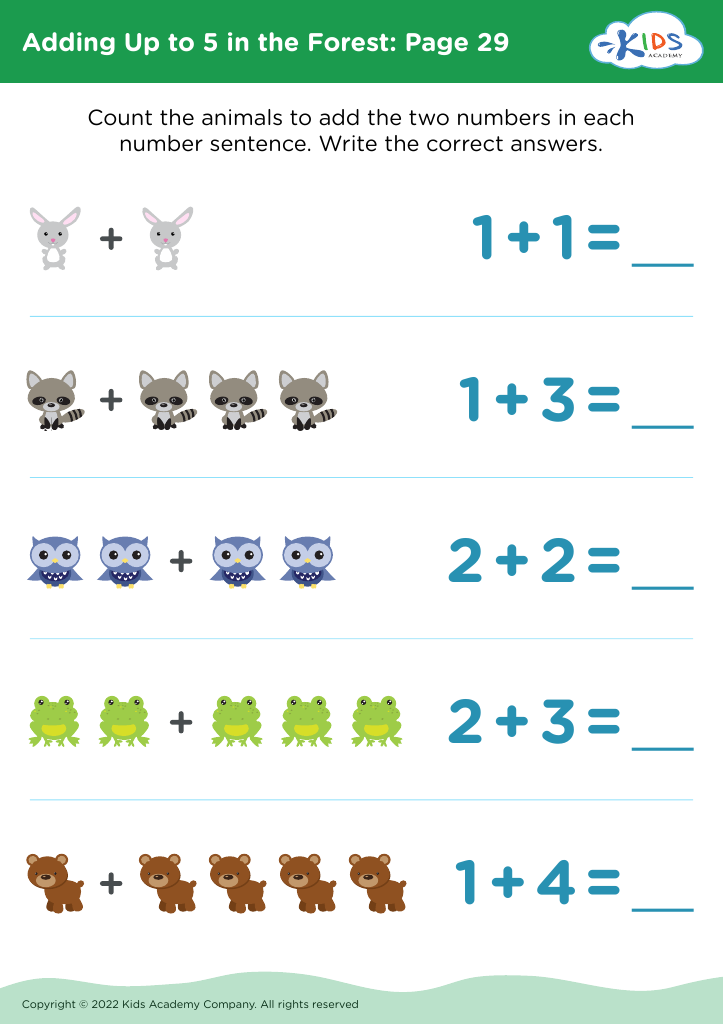Visual learning enhancement Addition Worksheets for Ages 5-8
4 filtered results
-
From - To
Unlock your child's potential with our "Visual Learning Enhancement Addition Worksheets" designed specifically for ages 5-8. These engaging worksheets utilize colorful visuals and interactive elements to make addition comprehension fun and effective. Tailored for young learners, the exercises promote visual recognition, aiding in the understanding of mathematical concepts. Each worksheet encourages kids to connect visual representations with numerical values, fostering deeper learning and retention. Enhance your child's math skills while boosting their confidence! Perfect for home or classroom use, these worksheets are an excellent resource for playful, hands-on learning. Start building a strong mathematical foundation today!
Visual learning enhancement in addition is crucial for children aged 5-8 because it taps into their natural learning styles. At this age, children are typically in a stage of rapid brain development, where they benefit immensely from engaging and interactive teaching methods. Utilizing visual aids such as colorful charts, manipulatives, and interactive games makes mathematical concepts more concrete and accessible. This approach not only sustains children’s interest but also caters to various learning abilities, ensuring that each child can grasp addition at their own pace.
Furthermore, visual learning tools can deepen comprehension by illustrating relationships between numbers, making abstract concepts more tangible. This foundational knowledge is essential for building higher-level math skills later on.
Parents and teachers invested in a child's education should prioritize visual learning strategies to foster confidence, improve problem-solving skills, and strengthen critical thinking abilities in mathematics. Moreover, such methods contribute to a positive attitude towards learning, which can lay the groundwork for lifelong academic success. In short, adopting visual learning enhancements for addition is a valuable investment in a child’s cognitive development and emotional well-being, ultimately setting them up for future achievements.























